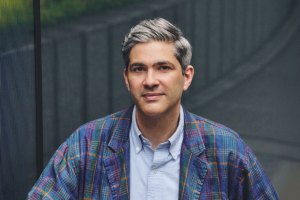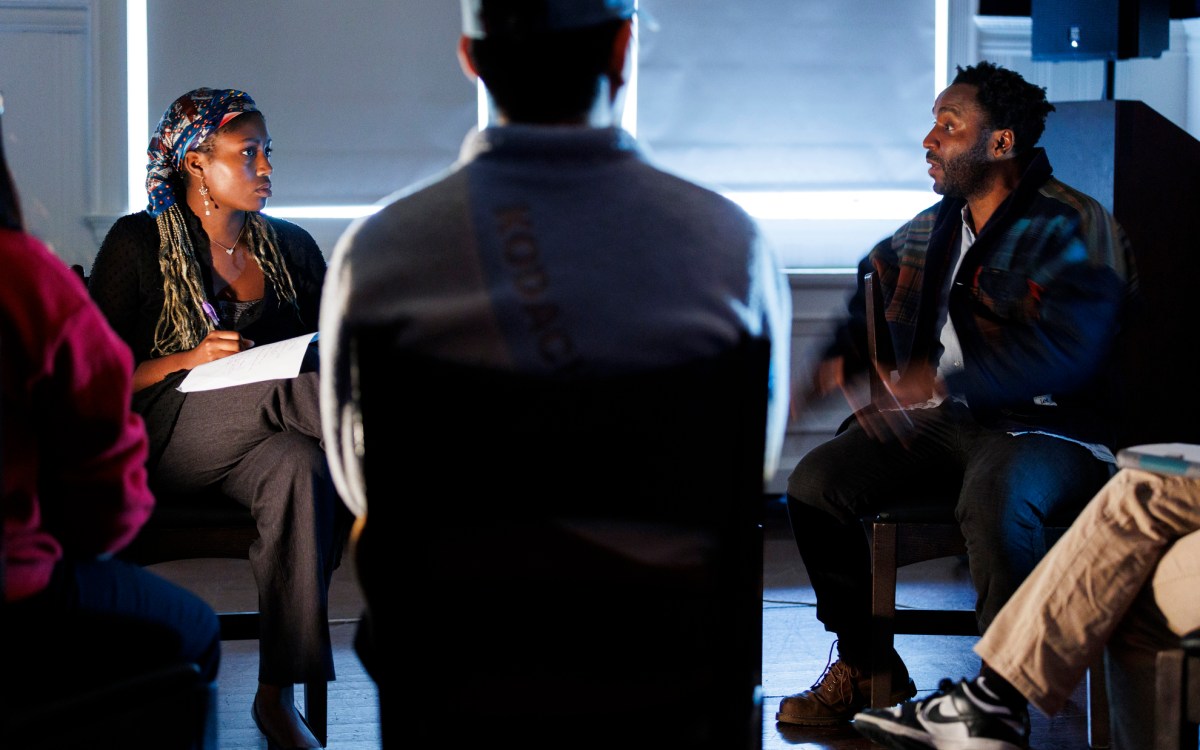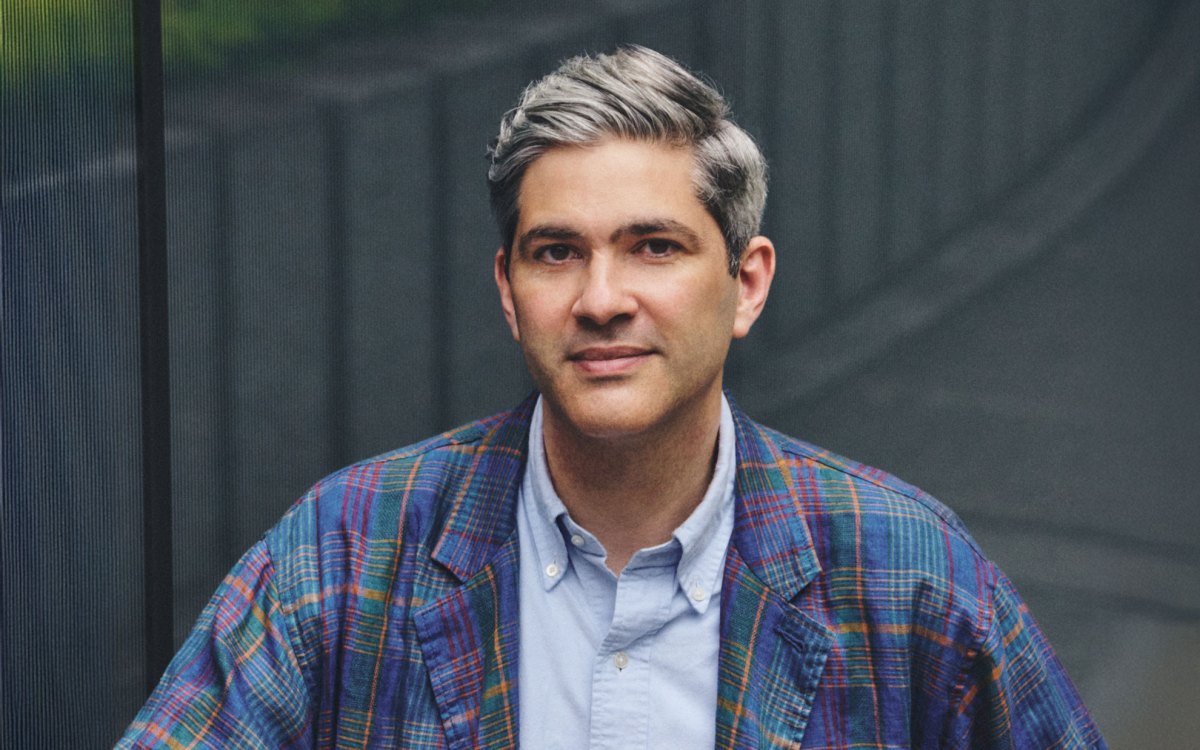A new look at the ‘Good War’
World War II has been called “The Good War,” often in contrast to later conflicts whose moral justification is seen as more ambivalent.
But how did the Good War become good, and what aspects of it had to be suppressed to qualify it for that title? Three scholars attempted to answer that question at a symposium March 9 titled “Cultural Impacts of World War II.” The event was sponsored by the Charles Warren Center for Studies in American History and was part of the center’s 2006-07 workshop on “Cultural Reverberations of Modern War.”
John Bodnar, a history professor at Indiana University, discussed the ways in which the war dead have been recognized and how those practices reflect attitudes toward the conflict.
Bodnar, who traveled to towns and cities across the country to examine World War II monuments, found a marked contrast between the way the war has been memorialized on the national level and the way local communities recognized the sacrifices of their fellow citizens.
National memorials, such as the recently completed World War II monument on the Mall in Washington, D.C., typically reflect a traditional framework that emphasizes the life of the nation rather than the sacrifices of individuals.
Memorials erected by cities and towns, on the other hand, emphasize the loss of individuals and the disruption to the life of the community. In many cases, plaques listing the names of the war dead are found in conjunction with “living memorials,” such as a park, auditorium, athletic field, or a stand of trees, something that emphasizes the future rather than the past and thus, Bodnar said, implicitly rejects the abstract patriotism of the traditional memorial.
In the aftermath of the war, a national debate took place over how to memorialize the war dead. Among the questions considered was what to do with the bodies of slain soldiers. Seventy percent of American families wanted the remains of their loved ones returned rather than buried overseas. There was much outcry over delays in returning the bodies, Bodnar said. A typical letter to the military contrasted the alacrity with which soldiers were drafted and sent to the front with the unconscionable delay in bringing their remains home.
Linda Gordon, a professor of history at New York University, gave a talk on photographer Dorothea Lange and her documentation of the internment of Japanese Americans during the war. Commissioned by the War Relocation Authority, the photographs were suppressed by the government for 60 years. More than 100 of them are reproduced in Gordon’s recent book “Impounded: Dorothea Lange and the Censored Images of Japanese American Internment.”
Lange faced many obstacles in her documentation of the relocation camps. She was specifically forbidden to photograph watchtowers, barbed-wire fences, armed guards, or other visual signs that the internees were being forced to relocate against their will.
Nevertheless, she did manage to produce moving photographs of Japanese families being removed from their homes, going through dehumanizing processing procedures, and living in converted horse stables.
“What is being stolen is not only their farms and their occupations, but their personal identity,” Gordon said.
The relocation of Japanese Americans was brought about by the attack on Pearl Harbor and the suspicion that Americans of Japanese ancestry were likely to sympathize with their nation of origin and sabotage the American war effort, Gordon said.
Lange, whose sympathies were clearly with the evacuees, tried in her photographs to emphasize their respectability, their normalcy, and their devotion to American institutions like baseball and the flag. Yet, the photographs’ good intentions, Gordon said, convey a disturbing underlying message.
“They seem to imply that these people have to earn their human rights through good behavior,” she said.
Gordon contrasted Lange’s images with Ansel Adams’ photos of interned Japanese Americans from the same period. Unlike Lange’s work, Adams’ photos show no context aside from a background of sky or landscape, and their subjects are always smiling. Gordon said that for her, Adams’ work masks a significant violation of human rights, although many Japanese Americans see them differently.
“Japanese organizations have always loved Adams’ photos,” she said. “They seem to affirm the Japanese Americans’ disciplined, nonresistant response to the relocation. People don’t like to be portrayed as victims. Showing defeat and humiliation in wartime may be seen as an attack on masculinity.”
Jeffrey McGee, a historian and musicologist at the University of Illinois, gave a talk on Irving Berlin’s musical show “This Is the Army,” which toured the European and Pacific theaters during the war and was seen by 200 million troops and civilians. In 1943 it was made into a movie starring George Murphy and Ronald Reagan among others and went on to earn more money than any film except “Gone with the Wind.”
In the musical, Berlin brings together three seemingly disparate elements to create a rousing celebration of American values and a call to sacrifice for the war effort. These are the transformation of individuals of varying backgrounds into proud, disciplined soldiers; the transformation of immigrants into Americans; and the 19th century tradition of minstrelsy.
In many instances, these transformations are brought about through a change of clothes. Immigrants shed their old-world garb and don typical American outfits; inductees wearing underwear sing plaintively as they undergo their physical exams, then emerge as part of a uniformed chorus stepping smartly in cadence; and in one scene a group of African Americans sing about “What the Well-Dressed Man in Harlem Will Wear” as they trade their snazzy duds for military uniforms, and boxing great Joe Lewis makes a cameo appearance in khaki.
The minstrelsy tradition is evoked in several scenes, including one in which white men in blackface, some wearing women’s clothes, sing a medley of Stephen Foster songs.
“The values and contradictions of traditional minstrelsy both challenged and reinforced racial stereotypes,” McGee said. “As a form of entertainment it was a common denominator, which dovetailed with the idea of the war as a common man’s war. However, it also reinforced beliefs in white superiority.”




